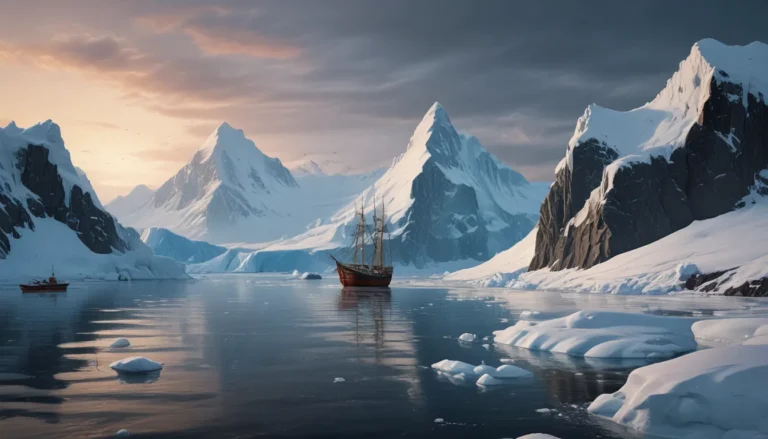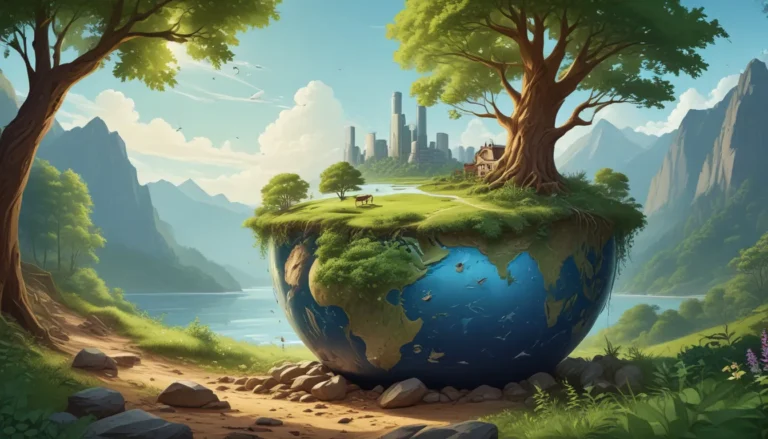A Note About Images: The images used in our articles are for illustration purposes only and may not exactly match the content. They are meant to engage readers, but the text should be relied upon for accurate information.
Climate zones shape the world we live in, influencing everything from weather patterns to agriculture, tourism, and even urban planning. From the steamy tropics to the icy poles, our planet is a tapestry of diverse climates waiting to be explored. In this article, we will delve into 18 astounding facts about climate zones that will broaden your understanding of the intricate web of climatic conditions that envelop our world. Whether you have a passion for meteorology, geography, or simply an inquisitive mind, these facts are sure to captivate your interest.
Unveiling the Essence of Climate Zones
The Earth is divided into five main climate zones, each with its unique features and weather patterns. These zones serve as the backbone of our planet’s weather systems, shaping the landscapes we call home and influencing the plants and animals that thrive in each region.
The World of Tropical Wonders
The tropical climate zone, situated near the equator, boasts high temperatures and abundant rainfall, giving rise to lush rainforests and vibrant ecosystems. This biodiverse region teems with life and is a melting pot of unique flora and fauna.
The Mystique of Arid Lands
In the dry climate zone, characterized by arid landscapes and scarce precipitation, the Sahara Desert stands as a testament to the harsh conditions found in these areas. This zone showcases the extremes of nature, where life adapts to thrive in the face of adversity.
Embracing the Four Seasons of the Temperate Zone
The temperate climate zone offers a symphony of four distinct seasons, from the budding of spring to the crispness of winter. Moderate temperatures and a rich variety of vegetation, including deciduous forests and grasslands, define this zone’s charm.
Enduring the Extremes of Continental Climates
Continental climate zones, nestled in the heart of continents, witness dramatic temperature fluctuations, with scorching summers and freezing winters challenging both flora and fauna. Adaptation is key to survival in these ever-changing environments.
Confronting the Eternal Chill of the Polar Regions
The polar climate zones, encircling the North and South Poles, endure freezing temperatures year-round, shaping unique ecosystems such as polar bears and penguins. Life in these icy realms is a testament to nature’s resilience in the face of extreme cold.
Impactful Influence of Climate Zones
Climate zones wield a profound influence on various aspects of our lives, from shaping agriculture and tourism to impacting energy consumption and urban development. Understanding these zones is crucial for navigating the complexities of our planet’s diverse environments.
Nurturing Agriculture in Diverse Climates
Agriculture thrives in specific climatic conditions, with different crops flourishing in different zones. Farmers rely on the nuances of each climate zone to determine the best practices for growing crops and sustaining livelihoods.
Adapting to Climate Change Challenges
Climate change is reshaping climate zones worldwide, leading to shifts in temperature and rainfall patterns. These changes impact ecosystems, species habitats, and human activities, highlighting the urgent need for sustainable practices.
Unveiling the Köppen Climate Classification System
The Köppen climate classification system offers a standardized approach to categorizing climate zones based on temperature, precipitation, and vegetation. This system provides researchers and policymakers with a comprehensive framework for studying global climate patterns.
Inspiring Tourism Destinations
Tourism is intrinsically linked to climate zones, with travelers seeking out destinations based on their desired climate and activities. Whether it’s skiing in the mountains or basking on a tropical beach, climate zones set the stage for unforgettable travel experiences.
Shaping Energy Consumption Patterns
Climate zones significantly influence energy consumption, with regions experiencing extreme climates requiring extensive heating or cooling systems. Balancing energy demand with environmental sustainability is crucial in these dynamic climates.
Molding Natural Landscapes with Precise Hands
The characteristics of climate zones sculpt natural landscapes worldwide, from dense forests in temperate regions to expansive deserts in dry zones. These landscapes reflect the climatic conditions of each zone, showcasing nature’s diversity and resilience.
Evolution of Climate Zones
Climate zones are dynamic entities that evolve over time due to natural processes and human interventions. Monitoring these changes is essential for understanding their impacts on ecosystems and human societies, fostering a harmonious coexistence with nature.
Influencing Animal Migration Patterns
Animal migration is intricately tied to climate zones, with many species relying on specific climatic conditions for breeding, feeding, and hibernation. Disruptions in climate zones can alter migration patterns, posing challenges for wildlife conservation efforts.
Fashioning Lifestyle Choices
The climate zones we inhabit shape our lifestyle choices, influencing our clothing preferences and fashion trends. Adaptability is key, with residents of hot climates opting for lightweight attire while those in colder regions don layers of insulation.
Embracing the Diversity of Climate Zones
From the equator to the poles, climate zones offer a kaleidoscope of landscapes and experiences, each with its unique allure and challenges. Exploring the intricacies of these zones enriches our understanding of the world we inhabit, fostering a deeper connection with nature’s wonders.
Preserving the Legacy of Climate Zones
As we confront the realities of climate change, preserving the delicate balance of climate zones becomes paramount. By safeguarding these diverse ecosystems and promoting sustainable practices, we ensure a flourishing future for generations to come, where nature and humanity coexist in harmonious synergy.
Frequently Asked Questions
- What are the main types of climate zones?
-
The main types of climate zones include tropical, subtropical, temperate, dry, polar, and highland.
-
How are climate zones determined?
-
Climate zones are determined by factors such as temperature, precipitation, and seasonal variations.
-
Is climate consistent within a zone?
-
Climate can vary within a zone due to geographic factors like elevation and proximity to bodies of water.
-
What is the impact of climate zones on biodiversity?
-
Climate zones play a crucial role in shaping biodiversity by influencing the species that can thrive in a given region.
-
Are climate zones static?
-
Climate zones can change over time due to natural fluctuations and human-induced climate change.
-
How do climate zones affect human activities?
-
Climate zones impact human activities such as agriculture, tourism, and urban planning, necessitating adaptive strategies.
-
Can climate zones shift geographically?
-
Climate zones can shift geographically over extended periods due to natural processes and global climate change.
-
What are some unique characteristics of climate zones?
- Each climate zone boasts unique features, from extreme temperatures in polar regions to abundant rainfall in tropical rainforests.
Concluding Thoughts
The enchanting world of climate zones beckons us to delve deeper into its mysteries and marvels, offering a glimpse into the intricate tapestry of our planet’s ecosystems. By embracing the diversity and significance of climate zones, we embark on a journey of discovery and stewardship, ensuring a sustainable legacy for the generations yet to come. Join us in celebrating the wonders of climate zones and the profound impact they hold on our world.






